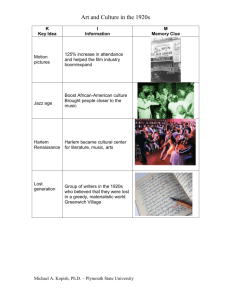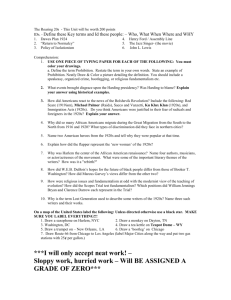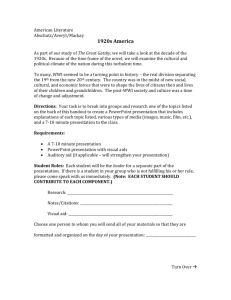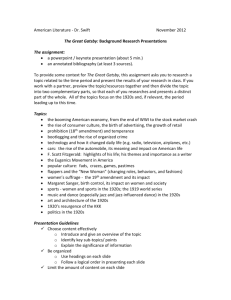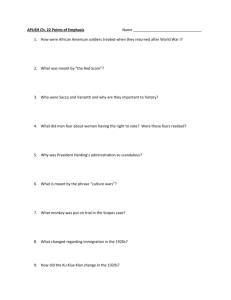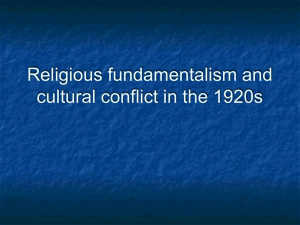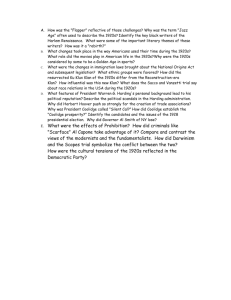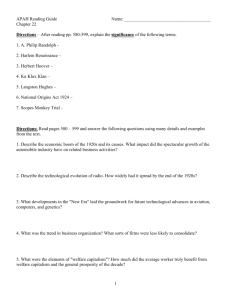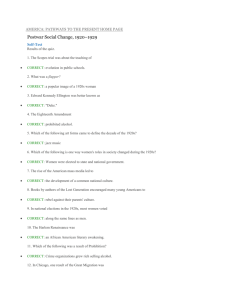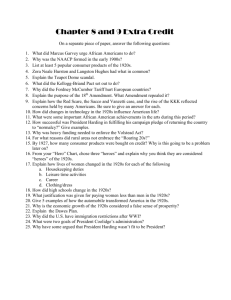1920s US History Study Guide: Key Terms & Concepts
advertisement
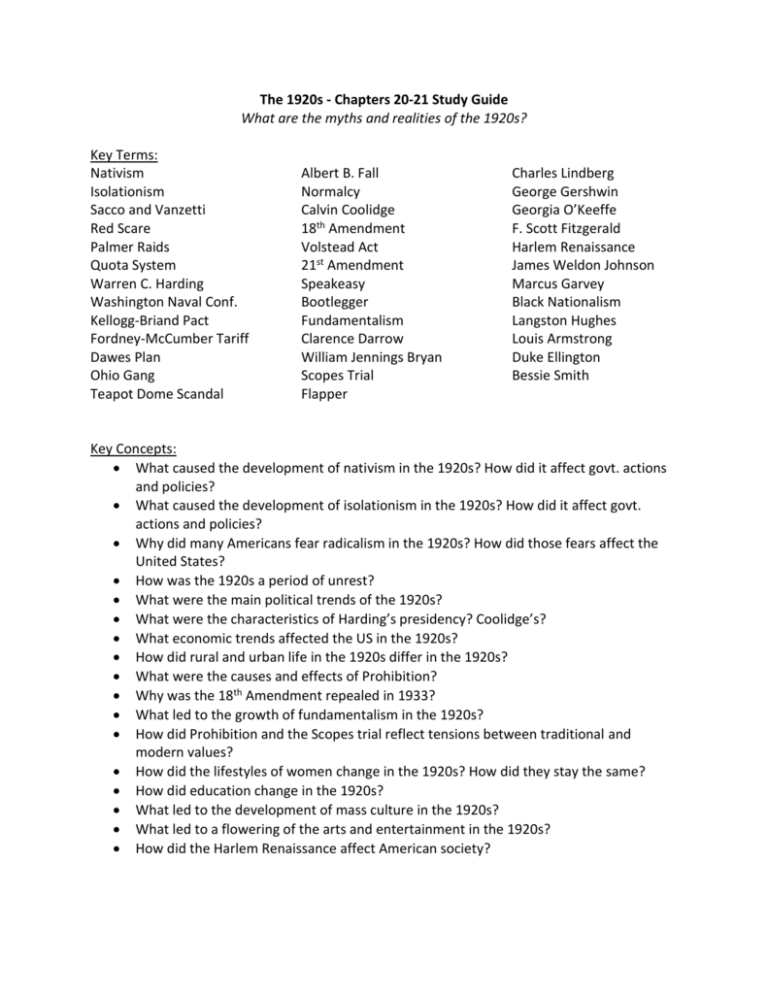
The 1920s - Chapters 20-21 Study Guide What are the myths and realities of the 1920s? Key Terms: Nativism Isolationism Sacco and Vanzetti Red Scare Palmer Raids Quota System Warren C. Harding Washington Naval Conf. Kellogg-Briand Pact Fordney-McCumber Tariff Dawes Plan Ohio Gang Teapot Dome Scandal Albert B. Fall Normalcy Calvin Coolidge 18th Amendment Volstead Act 21st Amendment Speakeasy Bootlegger Fundamentalism Clarence Darrow William Jennings Bryan Scopes Trial Flapper Charles Lindberg George Gershwin Georgia O’Keeffe F. Scott Fitzgerald Harlem Renaissance James Weldon Johnson Marcus Garvey Black Nationalism Langston Hughes Louis Armstrong Duke Ellington Bessie Smith Key Concepts: What caused the development of nativism in the 1920s? How did it affect govt. actions and policies? What caused the development of isolationism in the 1920s? How did it affect govt. actions and policies? Why did many Americans fear radicalism in the 1920s? How did those fears affect the United States? How was the 1920s a period of unrest? What were the main political trends of the 1920s? What were the characteristics of Harding’s presidency? Coolidge’s? What economic trends affected the US in the 1920s? How did rural and urban life in the 1920s differ in the 1920s? What were the causes and effects of Prohibition? Why was the 18th Amendment repealed in 1933? What led to the growth of fundamentalism in the 1920s? How did Prohibition and the Scopes trial reflect tensions between traditional and modern values? How did the lifestyles of women change in the 1920s? How did they stay the same? How did education change in the 1920s? What led to the development of mass culture in the 1920s? What led to a flowering of the arts and entertainment in the 1920s? How did the Harlem Renaissance affect American society?
